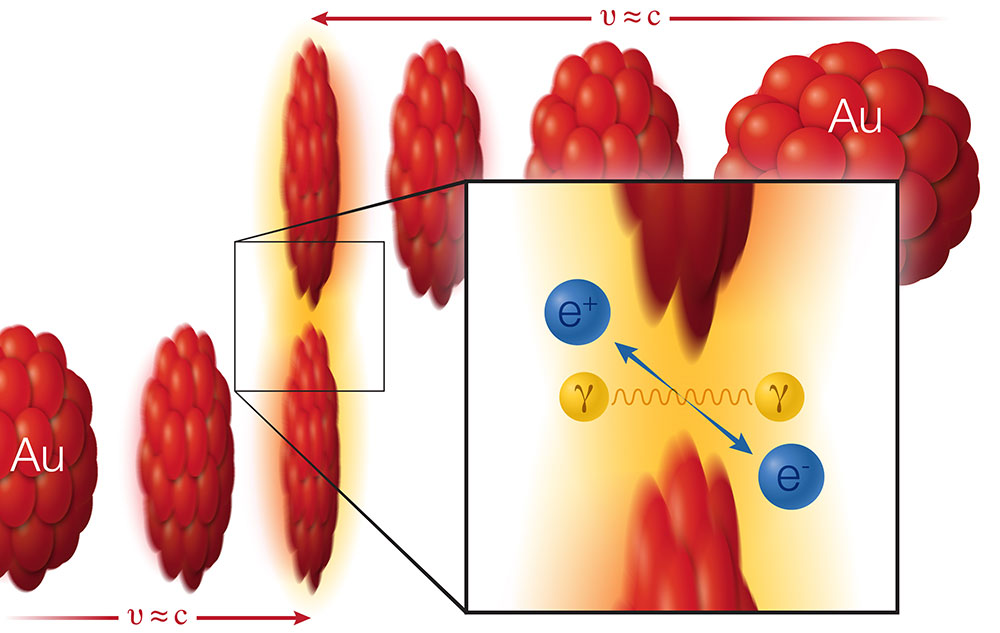From Brookhaven's Newsroom,July 28, 2021 :
Making matter from light: Two gold (Au) ions (red) move in opposite direction at 99.995% of the speed of light (v, for velocity, = approximately c, the speed of light). As the ions pass one another without colliding, two photons (γ) from the electromagnetic cloud surrounding the ions can interact with each other to create a matter-antimatter pair: an electron (e-) and positron (e+).
UPTON, NY—Scientists studying particle collisions at the Relativistic Heavy Ion Collider (RHIC)—a U.S. Department of Energy Office of Science user facility for nuclear physics research at DOE’s Brookhaven National Laboratory—have produced definitive evidence for two physics phenomena predicted more than 80 years ago. The results were derived from a detailed analysis of more than 6,000 pairs of electrons and positrons produced in glancing particle collisions at RHIC and are published in Physical Review Letters.
The primary finding is that pairs of electrons and positrons—particles of matter and antimatter—can be created directly by colliding very energetic photons, which are quantum “packets” of light. This conversion of energetic light into matter is a direct consequence of Einstein’s famous E=mc2 equation, which states that energy and matter (or mass) are interchangeable. Nuclear reactions in the sun and at nuclear power plants regularly convert matter into energy. Now scientists have converted light energy directly into matter in a single step.
The second result shows that the path of light traveling through a magnetic field in a vacuum bends differently depending on how that light is polarized. Such polarization-dependent deflection (known as birefringence) occurs when light travels through certain materials. (This effect is similar to the way wavelength-dependent deflection splits white light into rainbows.) But this is the first demonstration of polarization-dependent light-bending in a vacuum.
Both results depend on the ability of RHIC’s STAR detector—the Solenoid Tracker at RHIC—to measure the angular distribution of particles produced in glancing collisions of gold ions moving at nearly the speed of light.
Colliding clouds of photons....
....MUCH MORE
HT: BLDGBLOG
